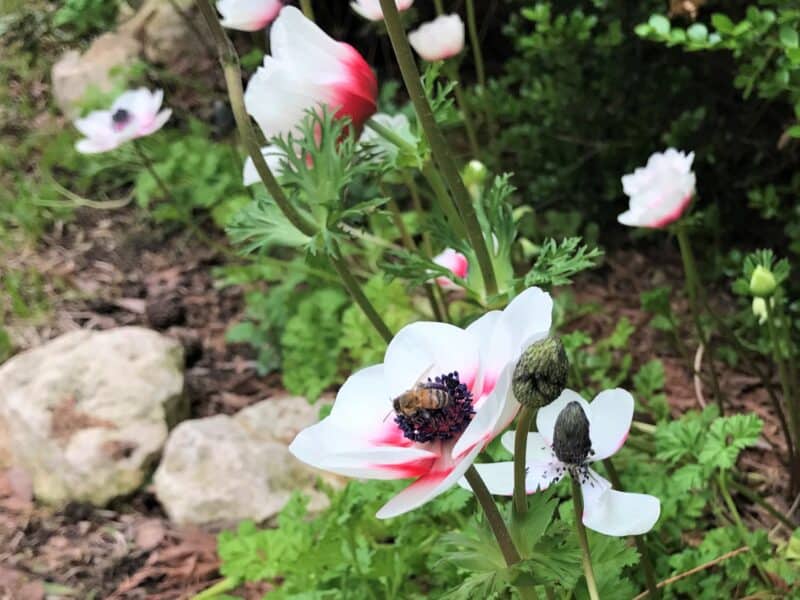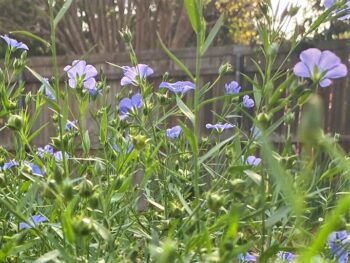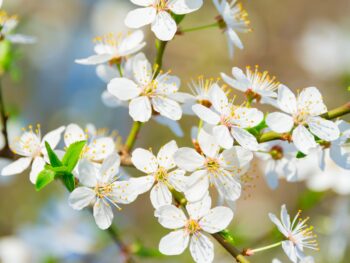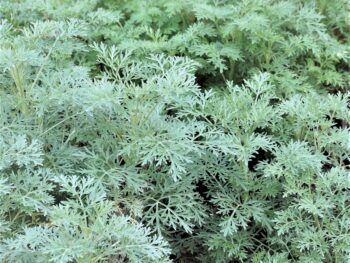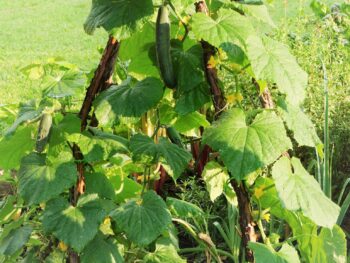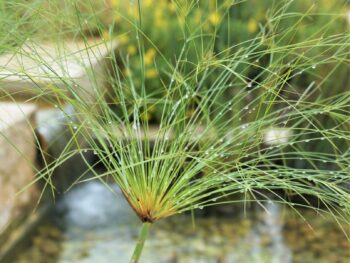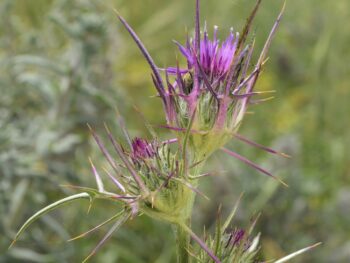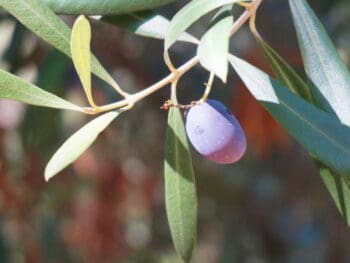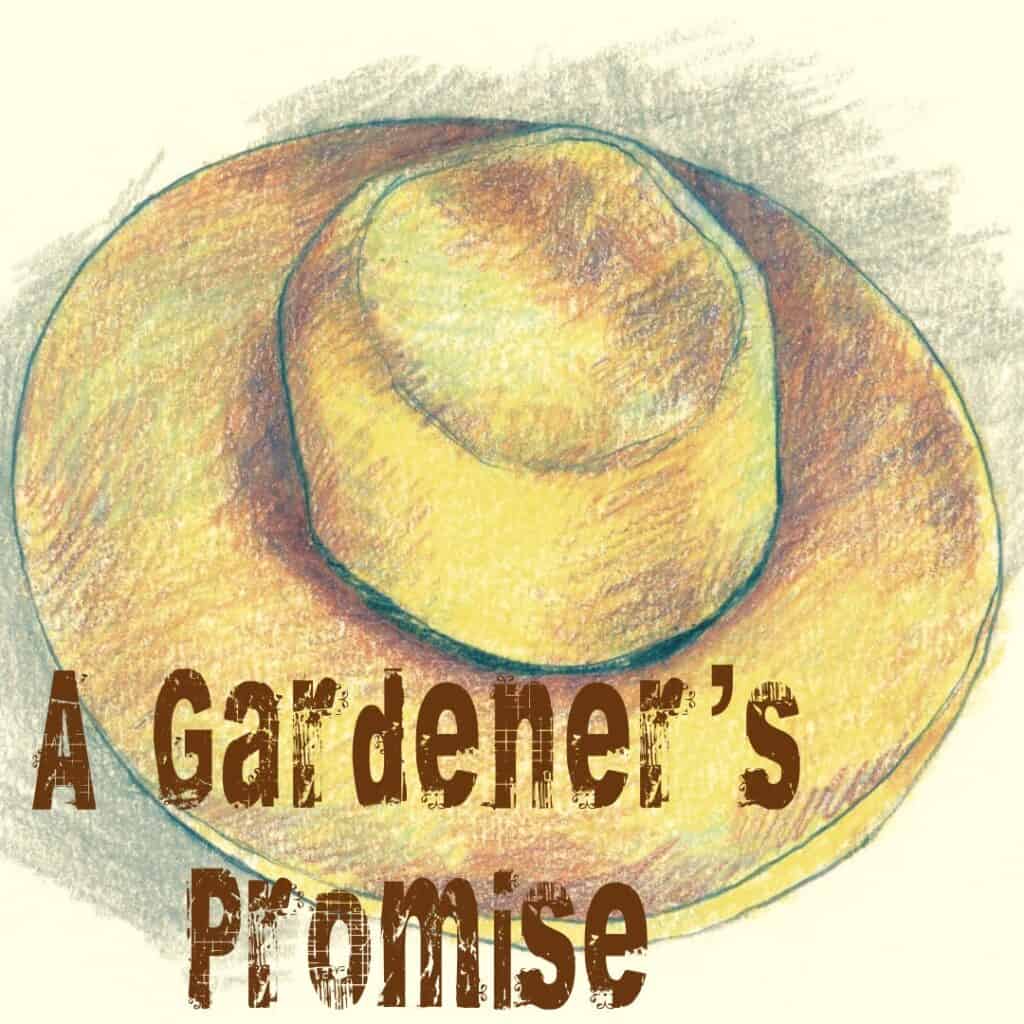
Deciding to plant a garden begins with a rush of decision-making followed by the muscle-moving chores of preparing the soil…but just when we are worn out by all of this work, it is time to plant and the fun begins. And the greatest joy, I think, is planting flowers! Their showy exuberance, bright colors, and charming scents bring blissful smiles down deep to our heart and make all the grueling grunt work worthwhile. Two Holy Land flowers that help illustrate the metaphors of God’s planting work carried on throughout the pages of the Bible are crown anemones and crocus. My Father is the Gardener showcases these beauties, both grown from bulbs, in chapters 5 and 6 of this new book.
Click here to buy My Father is the Gardener
Chapters 5 and 6 – Planting & Crown Anemones and Crocus
Planting plants in a garden opens up many metaphors for our lives on becoming established, grounded, positioned for growth, poised to flourish, and so forth. Implicit in Scripture is that Someone plants us, God; and He continues to watch over, tend, keep, and guard what He plants with great compassion. Flowers returning each year in their season, as flowers from bulbs are designed to do, resound the truth of God’s faithfulness, displaying this reality in cheerful joy!
The desert and the parched land will be glad; the wilderness will rejoice and blossom. Like the crocus, it will burst into bloom; it will rejoice greatly and shout for joy. Isaiah 35:1–2 NIV
Crown Anemones and Crocus
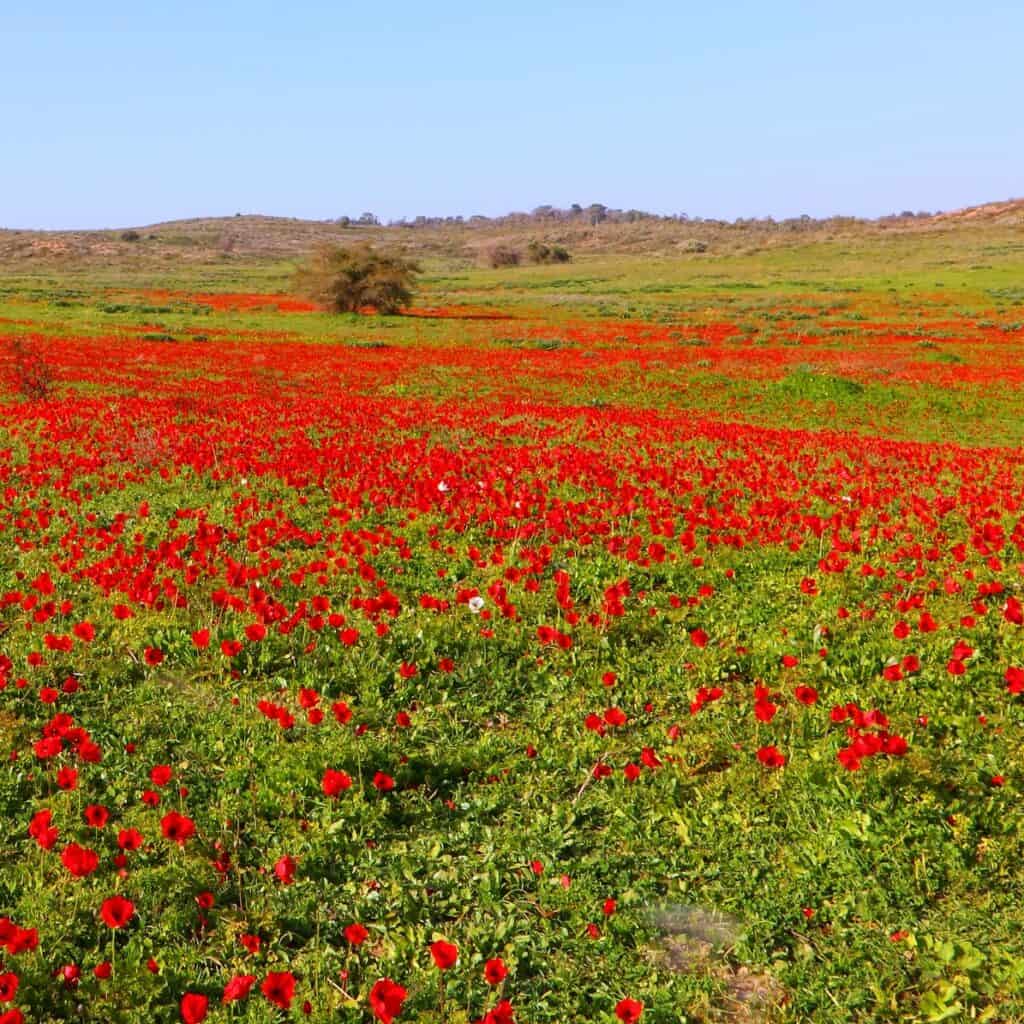
Crown Anemones, Anemone coronaria, are the darlings of Israel, appearing in early spring across the fields and deserts, covering the land in sensational red delight. These flowers are readily available to us, sold in florists’ shops, at flower farms, and grown in the home garden from tubers or transplants. “Flowers of the field,” a repeated reference in the Bible, is likely referring to these flowers. Their bloom begins a succession of flourishing display throughout the spring. Learn more about Crown Anemone from the Plant Guide: Crown Anemone – Garden In Delight

Winter crocus, Crocus hyemalis, are a special crocus unique to the Holy Land, blooming as winter approaches. While American gardeners assign crocus as heralds of spring, signaling the happy hope of winter’s passing, crocus-joy in ancient Israel declared the end of summer and the refreshing fall and winter rains arrival. Autumn crocus and colchicums begin their bloom, then saffron crocus, followed by winter crocus. The last are considered little lights in the landscape, similar to Chanukah candles glowing in the holiday menorah, since they flower during this let-there-be-light holiday. Learn more about growing winter crocus in the Plant Guide: Winter Crocus – Garden In Delight
click here for a printable PDF file of Planting and Crown Anemones and Crocus Journal Questions
Journal Questions Chapter 5
Follow along in Chapter 5 of My Father is the Gardener
If then you are not even able to do a very little thing, why are you anxious about the rest? Consider the lilies, how they grow: they do not toil or spin, but I say to you, not even Solomon in all his glory was dressed like one of these. But if God clothes the grass in the field in this way, although it is here today and tomorrow is thrown into the oven, how much more will he do so for you, you of little faith? Luke 12:26–28 LEB
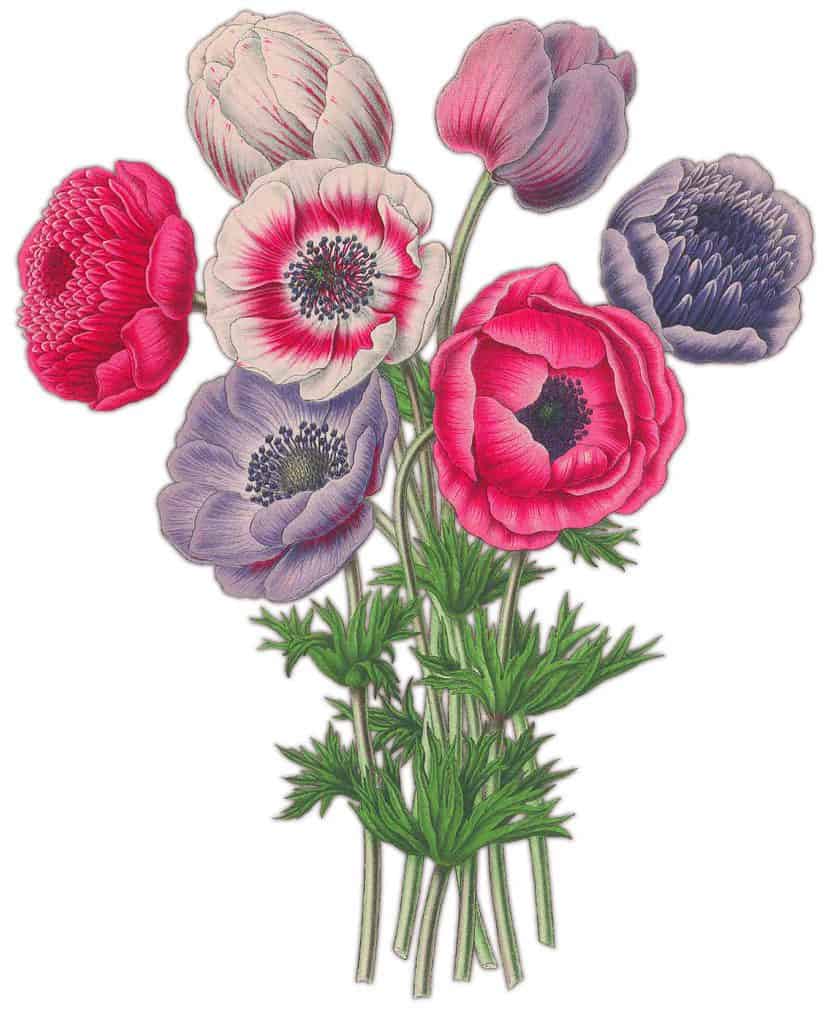
- What are your favorite bulbs to plant in your garden? Tulips and daffodils are most popular, but did you realize that lilies grow from bulbs? Are you familiar with crown anemones and have you ever planted them?
- “God is faithful about everything he says and merciful in everything he does (Psalm 145:17 ISV).” Reflect on how God has been faithful to you and merciful, too:
- Do you associate flowers with God’s faithfulness?
- This is Jesus’ declaration to us: How much more will our Father bloom and bless our lives than the colorful covering of wild fields in spring flowers. Write a prayer to God to embrace this reality:
I will establish a place for My people Israel and plant them, so that they may live there and not be disturbed again. Evildoers will not afflict them as they have done. 2 Samuel 7:10 HCSB
- Have you been aware of how God has acted on your behalf to “plant” you in your place to live?
- What are some of the features of where you live that are personally suited to you and your family?
- Write an invitation to God to make your place His home (Exodus 15:17 NKJV):
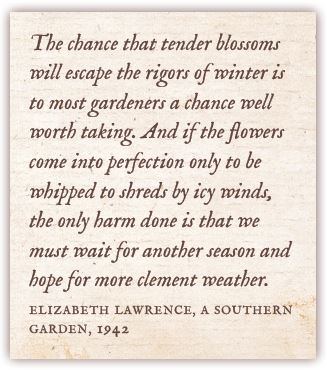
I’ll make an everlasting covenant with them that I won’t turn away from doing good for them. I’ll put the fear of me in their hearts so they won’t turn away from me. I’ll rejoice over them to do good for them, and I’ll faithfully plant them in this land with all my heart and soul. Jeremiah 32:40–41 ISV
- Have you or your family endured an instance of being “whipped to shreds by icy winds” as Elizabeth Lawrence wrote?
- How has God begun His work of replanting you? Do you sense His everlasting love bringing you back?
A good woman is hard to find, and worth far more than diamonds. She’s up before dawn, preparing breakfast for her family and organizing her day. She looks over a field and buys it, then, with money she’s put aside, plants a garden. Proverbs 31:10, 15–16 MSG
- Are you familiar with the Proverbs 31 passage describing a noble woman? For female readers – Where is your heart in relation to these Words: a) inspired by them, aspiring to live up to these Words b) annoyed by them, who could live so perfectly? c) defeated by them, there is no way I can do all of that d) indifferent or rebellious towards them, dismissing rules and don’t tell me what to do. Record and reflect on your answer or write a different one:
- Find at least one activity in verses 10-31 that you love to do…or is “plants a garden (v.16)” your only common ground with this woman?
- Why do you think planting a garden is part of her noble works?
So walk out on your corrupt liaison with smut and depraved living, and humbly welcome the word of truth that will blossom like the seed of salvation planted in your souls. James 1:21 VOICE
- Have you witnessed at least one word of truth, that is, the Word of God, blossoming in your soul? Which Word or Scripture?
…we are to let his Word, planted in us, to be the perennial bloom of his goodness, his love, his purity.
Shelley S. Cramm, My Father is the Gardener, page 68

Journal Questions Chapter 6
Follow along in Chapter 6 of My Father is the Gardener
The desert and the parched land will be glad; the wilderness will rejoice and blossom. Like the crocus, it will burst into bloom; it will rejoice greatly and shout for joy. Isaiah 35:1–2 NIV
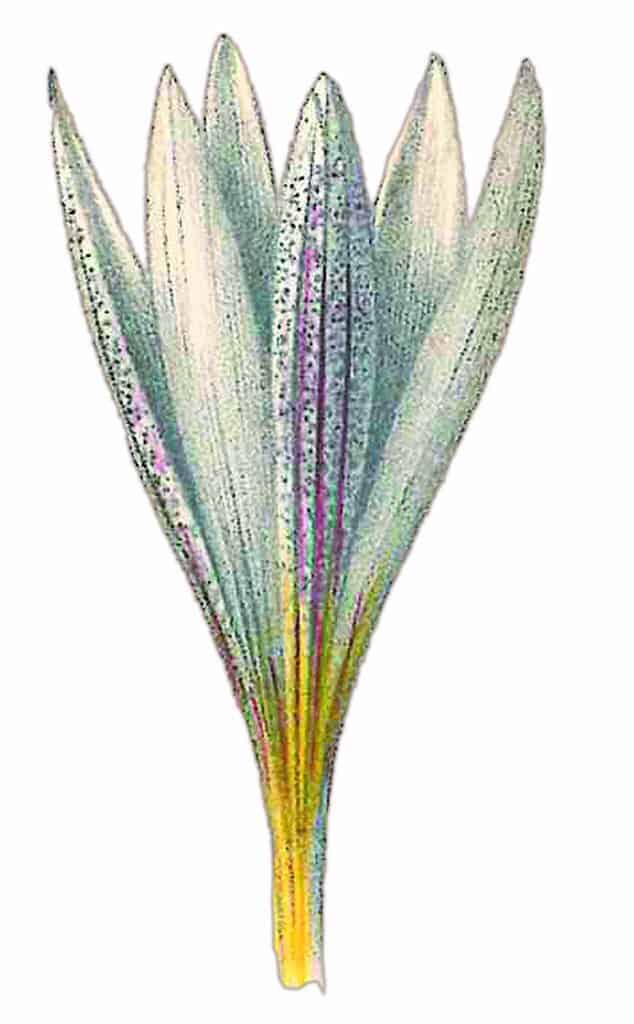
- Do you grow crocus in your garden? Do they symbolize spring to you? Have you ever grown fall or winter species?
- Name other plants that you associate with the turning of a new season. Do they bring joy, renewal, and excitement for what comes next, or other attitudes or emotions?
Isaiah found splendid hope and joy in the company of the small and unassuming crocus bloom
Shelley S. Cramm, My Father is the Gardener, page 73
We know that God not only loves you but has selected you for a special purpose. For we remember how our Gospel came to you not as mere words, but as a message with power behind it—the effectual power, in fact, of the Holy Spirit. 1 Thessalonians 1:4–5 PHILLIPS
- Have you heard of the “Thrillers, Fillers, and Spillers” method of planting pots?
- Do you add pots to your garden beds or walkways, or keep everything in the ground….or are potted plants the only way that you garden?
- Recount how the Holy Spirit “thrilled, filled, and spilled” in His arrival in Acts 2:
He is the one who makes the mountains and creates the wind and makes his thoughts known to people. He changes the dawn into darkness and walks over the mountains of the earth. His name is the Lord God All-Powerful. Amos 4:13 NCV
- Reflect on a simple garden moment that simply thrilled you:
- Did the first bulb tips pushing up or first rose to bloom bring your thoughts to God? Have you begun to understand this Word as a descriptor for such a moment: “Then you will know that I am the Lord.” (Deuteronomy 29:5, 1 Kings 20:28, Isaiah 49:23, Jeremiah 24:7, Ezekiel 38:23, etc.)
The time will come when all the earth is filled, as the waters fill the sea, with an awareness of the glory of the Lord. Habakkuk 2:14 TLB
- Write your definition of the glory of the Lord and describe your awareness of His glory:
- Has keeping a garden helped to grow your awareness, or have other areas of your life led you to it?
- Write out Psalm 72:19 in your own handwriting:
May the God of hope fill you with all joy and peace as you trust in him, so that you may overflow with hope by the power of the Holy Spirit. Romans 15:13 NIV
- How has gardening grown the “happy habit of hospitality” (quoted from page 83) in you?
- Reflect on the story of the good Samaritan as you write 3 John 5 in your own handwriting:
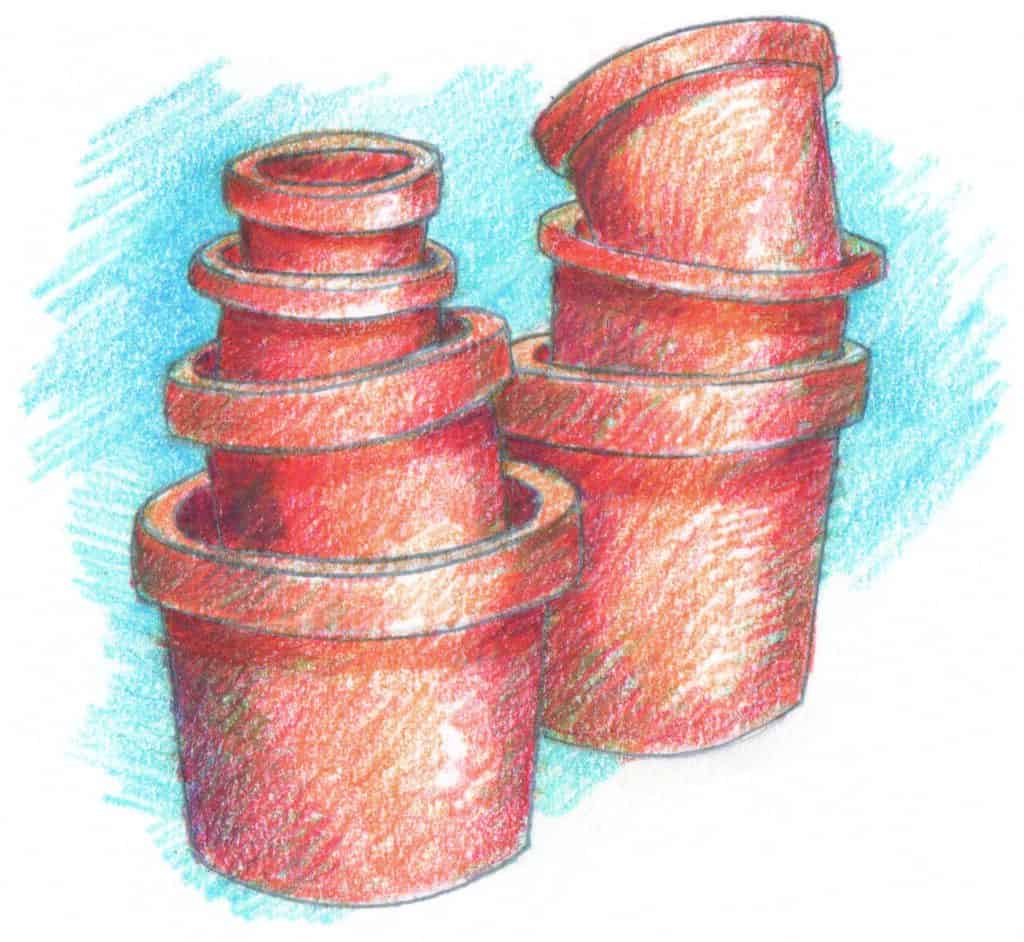
Closing Prayer
O Lord, you have so much more in mind when you “plant” me in places. Naturally, my first thoughts go to worry and concern for my own needs, so help me to trust you, O wildflower God, that you are faithful and will see to it that I have all I need. I praise You that You will provide for me. But far beyond my basics, You intend to spill out Your Spirit through me to your people around me. The generosity and thrill of my gardening work will transform my heart with hospitality, and I will become Your happy greeting to others. O Lord, may your joy cheer me along and “raise the rafters (Zephaniah 3:14),” celebrating your blooming, everlasting love in everyday work.
God is faithful about everything he says and merciful in everything he does Psalm 145:17 ISV
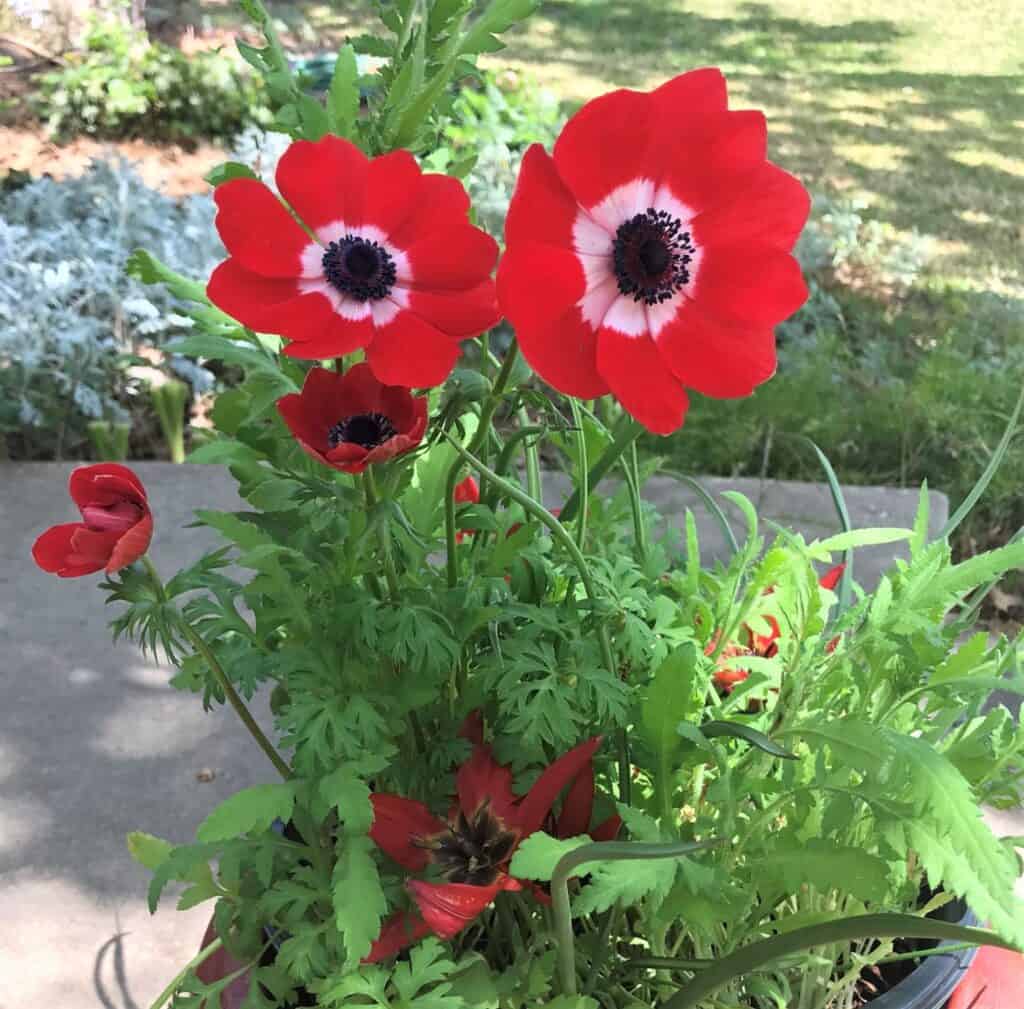

A Gardener’s Promise explores God’s forever-with-you devotion to us. More than a casual sentiment, God’s love is an enriching commitment to dig into everything together, a promise to hang your hat on. Part journal questions, part planting guide, this 7-part series has been created as a companion to My Father is the Gardener, Devotions in Botany and Gardening of the Bible, a way to work out God’s profound assurance in the backyard, arriving at Resurrection Day with a deeper grasp of what Christ has for us in revival life.
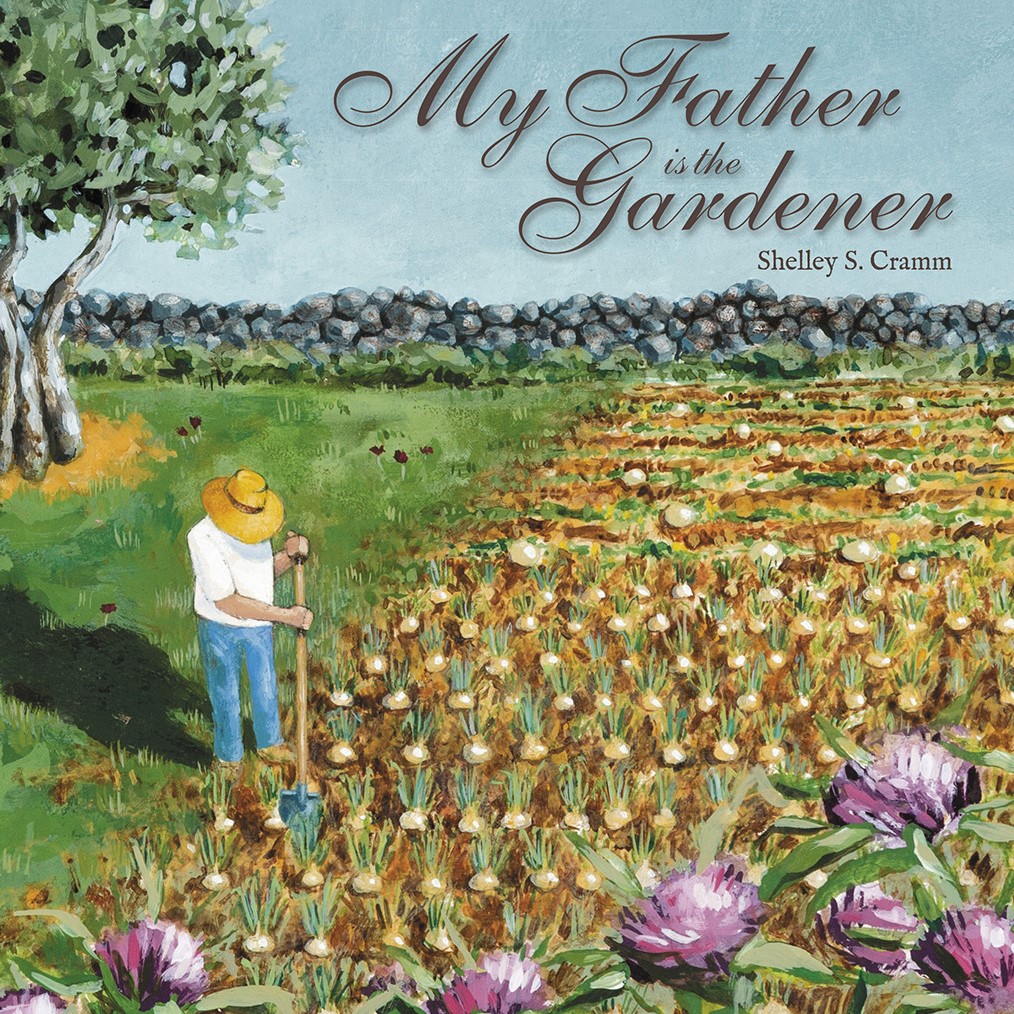
Enjoy Shelley’s latest book, a perfect study for Lent and the herald of spring. My Father is the Gardener digs into the plants, gardening, and landscapes of the Bible, unearthing inspiration in the routine ways of caring for plants and keeping a garden. Now available at BRIT Press, Powell’s Bookstore, and Amazon. Click to order: www.gardenindelight.com/books/my-father-is-the-gardener/
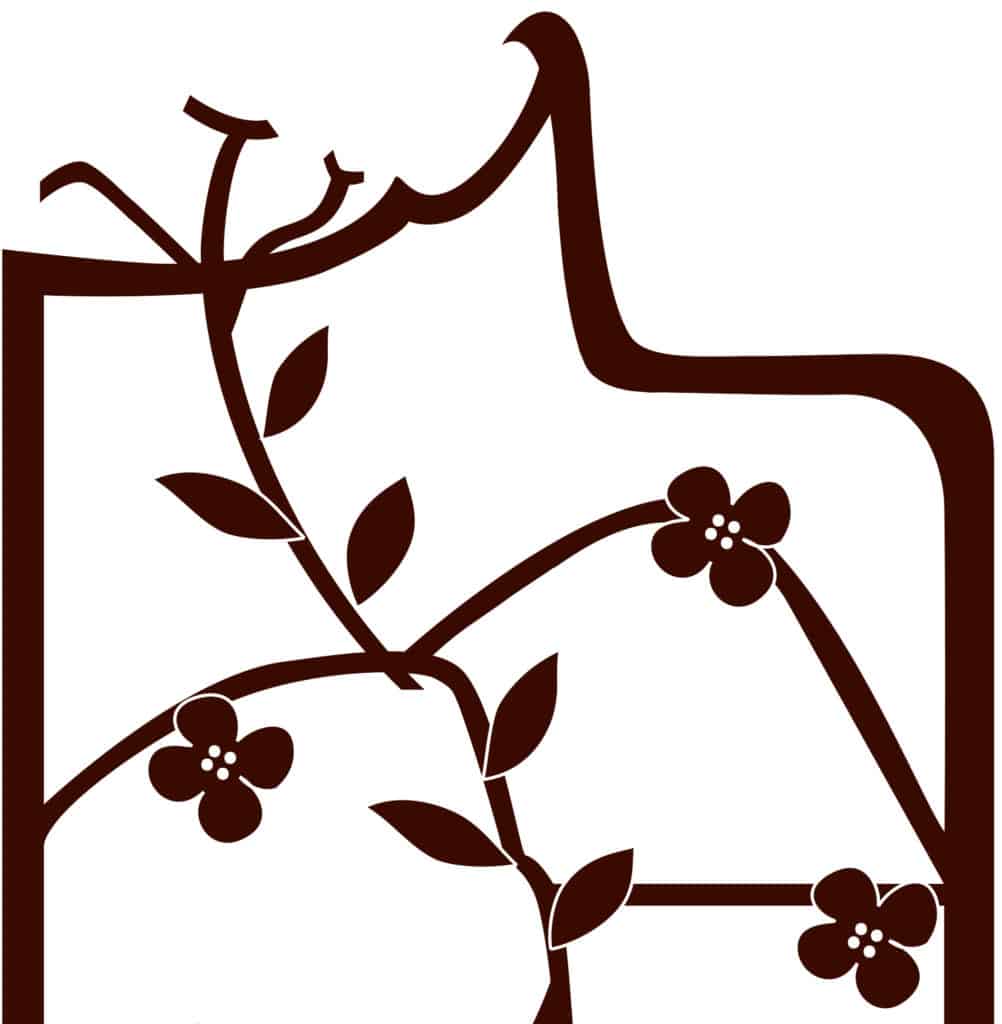
Visit the Plant Guide for more information on growing the plants of the Bible in your own garden. Find Crown Anemone – Garden In Delight along with other Flowers of the Field, and Winter Crocus, Autumn Crocus, and Saffron Crocus

For more on Flowers of the Field, enjoy Let Faith Flourish, a devotional series on “flowers of the field,” the phrase Jesus reiterated from ancient Scripture to relate the flower-filled spring countryside to the Father’s faithfulness (Psalm 103, Matthew 6:28-34). With a series of blooming crown anemones, chamomile, tulips, lilies, narcissus, and poppies showcasing in the Holy Land spring, may worry be displaced with the Word of the Lord and may the earth’s true flourish be faith in our hearts! Published for Lent in 2018.
Photo Credits: ©2018 Shelley S. Cramm Bi-color crown anemones blooming with a bee; Gardener’s hat, drawing by Layla Luna; ©2015 Palex66 | Dreamstime.com Spring blossoming of the red flowers (wild anemones), spring in the south of Israel; ©2021 Shelley S. Cramm Crocus hyemalis growing in a pot; Witte, Heinrich and Wendel, Abraham Jacobus, illustrator. Flora: afbeeldingen en beschrijvingen van boomen, heesters, éénjarige planten, enz … (Groningen: J.B. Wolters, 1868). Plate 51. Image from Biodiversity Heritage Library, Contributed by Lloyd Library and Museum. www.biodiversitylibrary.org/page/54293124 ; Garden shovel by Layla Luna; Maw, George. A monograph of the genus Crocus. (London: Dulau, 1886). Plate 42. Image from the Botanical Research Institute of Texas Library; Stack of clay pots by Layla Luna; ©2019 Shelley S. Cramm Pot of crown anemones add welcoming joy to our front porch. All drawings by Layla Luna created exclusively for My Father is the Gardener are copyrighted material. For copyright permission, please contact Shelley S. Cramm, shelleycramm@gardeninDelight.com
CEB notes Scripture quotations taken from the Common English Bible © 2011 Common English Bible, Nashville, Tennessee. All Rights Reserved. The CEB translation was funded by the Church Resources Development Corp, which allows for cooperation among denominational publishers in the development and distribution of Bibles, curriculum, and worship materials.
HCSB denotes Scripture quotations taken from the Holman Christian Standard Bible®, Copyright © 1999, 2000, 2002, 2003, 2009 by Holman Bible Publishers. Used by permission. Holman Christian Standard Bible®, Holman CSB®, and HCSB® are federally registered trademarks of Holman Bible Publishers.
ISV denotes Scripture quotations from The Holy Bible: International Standard Version. Release 2.0, Build 2015.02.09. Copyright © 1995-2014 by ISV Foundation. ALL RIGHTS RESERVED INTERNATIONALLY. Used by permission of Davidson Press, LLC.
LEB denotes Scripture quotations taken from the Lexham English Bible. Copyright 2012 Logos Bible Software. Lexham is a registered trademark of Logos Bible Software.
MSG denotes Scripture quotations taken from THE MESSAGE, copyright © 1993, 2002, 2018 by Eugene H. Peterson. Used by permission of NavPress. All rights reserved. Represented by Tyndale House Publishers, a Division of Tyndale House Ministries.
NCV denotes Scripture quotations taken from the New Century Version®. Copyright © 2005 by Thomas Nelson. Used by permission. All rights reserved.
NIV denotes Scripture quotations taken from the Holy Bible, New International Version®, NIV®. Copyright © 1973, 1978, 1984, 2011 by Biblica, Inc.® Used by permission of Zondervan. All rights reserved worldwide. www.zondervan.com The “NIV” and “New International Version” are trademarks registered in the United States Patent and Trademark Office by Biblica, Inc.®
NKJV denotes Scripture taken from the New King James Version®. Copyright © 1982 by Thomas Nelson. Used by permission. All rights reserved.
PHILLIPS denotes Scripture quotations taken from The New Testament in Modern English by J.B Phillips copyright © 1960, 1972 J. B. Phillips. Administered by The Archbishops’ Council of the Church of England. Used by Permission.
RSV denotes Scripture quotations taken from the Revised Standard Version of the Bible, copyright © 1946, 1952, and 1971 the Division of Christian Education of the National Council of the Churches of Christ in the United States of America. Used by permission. All rights reserved.
TLB denotes Scripture quotations taken from The Living Bible copyright © 1971 by Tyndale House Foundation. Used by permission of Tyndale House Publishers Inc., Carol Stream, Illinois 60188. All rights reserved. The Living Bible, TLB, and the The Living Bible logo are registered trademarks of Tyndale House Publishers.
VOICE denotes Scripture quotations taken from The Voice™. Copyright © 2012 by Ecclesia Bible Society. Used by permission. All rights reserved.

